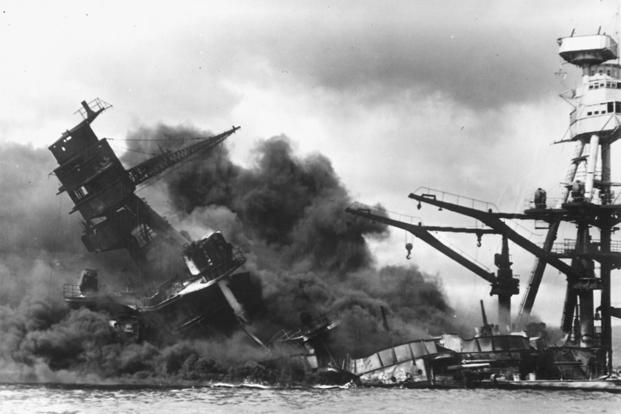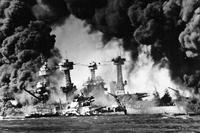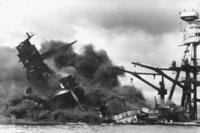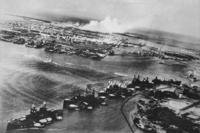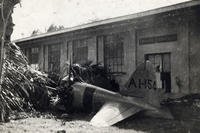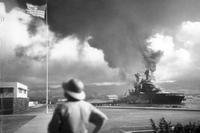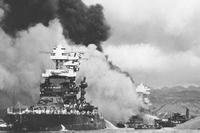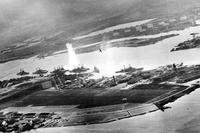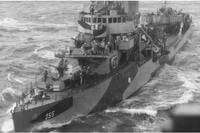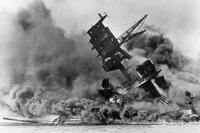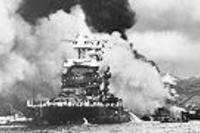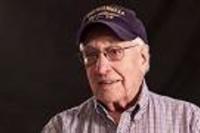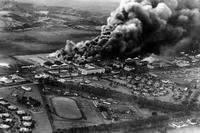The Pearl Harbor naval base was recognized by both the Japanese and the United States Navies as a potential target for hostile carrier air power. The U.S. Navy had even explored the issue during some of its interwar "Fleet Problems". However, its distance from Japan and shallow harbor, the certainty that Japan's navy would have many other pressing needs for its aircraft carriers in the event of war, and a belief that intelligence would provide warning persuaded senior U.S. officers that the prospect of an attack on Pearl Harbor could be safely discounted.
When the time came for war in 1941, the Japanese devised a mission which included all six of the nation's first-line aircraft carriers, Akagi, Kaga, Soryu, Hiryu, Shokaku and Zuikaku. With over 420 embarked planes, these ships constituted by far the most powerful carrier task force ever assembled. Vice Admiral Chuichi Nagumo would command the operation. His Pearl Harbor Striking Force also included fast battleships, cruisers and destroyers, with tankers to fuel the ships during their passage across the Pacific. An Advance Expeditionary Force of large submarines, five of them carrying midget submarines, was sent to scout around Hawaii, dispatch the midgets into Pearl Harbor to attack ships there, and torpedo American warships that might escape to sea.
Under the greatest secrecy, Nagumo took his ships to sea on 26 November 1941, with orders to abort the mission if he was discovered, or should diplomacy work an unanticipated miracle. Before dawn on the 7th of December, undiscovered and with diplomatic prospects firmly at an end, the Pearl Harbor Striking Force was less than 300 miles north of Pearl Harbor. At 6:00 a.m., six carriers launched a first wave of 181 planes composed of torpedo bombers, dive bombers, horizontal bombers and fighters. Even as they flew south, some elements of U.S. forces on Oahu realized there was something different about this Sunday morning. In the hours before dawn, U.S. Navy vessels spotted an unidentified submarine periscope near the entrance to Pearl Harbor. It was attacked and reported sunk by the destroyer USS Ward (DD-139) and a patrol plane.
At 7:00 a.m., an alert operator of an Army radar station at Opana spotted the approaching first wave of the attack force. The officers to whom those reports were relayed did not consider them significant enough to take action. The report of the submarine sinking was handled routinely, and the radar sighting was passed off as an approaching group of American planes due to arrive that morning.
The Japanese aircraft achieved complete surprise when they hit American ships and military installations on Oahu shortly before 8:00 a.m., attacking military airfields at the same time they hit the fleet anchored in Pearl Harbor. The Navy air bases at Ford Island and Kaneohe Bay, the Marine airfield at Ewa and the Army Air Corps fields at Bellows, Wheeler and Hickam were all bombed and strafed. The purpose of the simultaneous attacks was to destroy the American planes before they could rise to intercept the Japanese.
Of the 100 ships in Pearl Harbor, the primary targets were the eight battleships anchored there. Seven were moored on Battleship Row along the southeast shore of Ford Island while the USS Pennsylvania (BB-38) lay in drydock across the channel. Within the first minutes of the attack all the battleships adjacent to Ford Island had taken bomb and/or torpedo hits. The USS West Virginia (BB-48) sank quickly. The USS Oklahoma (BB-37) turned turtle and sank. At about 8:10 a.m., the USS Arizona (BB-39) was mortally wounded by an armorpiercing bomb which ignited the ship's forward ammunition magazine. The resulting explosion and fire killed 1,177 crewmen, the greatest loss of life on any ship that day and about half the total number of Americans killed. The USS California (BB-44), USS Maryland (BB-46), USS Tennessee (BB-43) and USS Nevada (BB-36) also suffered varying degrees of damage in the first half hour of the raid.
There was a short lull in attack at about 8:30 a.m. At that time the USS Nevada, despite her wounds, managed to get underway and move down the channel toward the open sea. Before she could clear the harbor, a second wave of 170 Japanese planes, launched 30 minutes after the first, appeared over the harbor. They concentrated their attacks on the moving battleship, hoping to sink her in the channel and block the narrow entrance to Pearl Harbor. On orders from the harbor control tower, the Nevada beached herself at Hospital Point and the channel remained clear.
When the attack ended shortly before 10:00 a.m., less than two hours after it began, the American forces has paid a fearful price. Twenty-one ships of the U.S. Pacific Fleet were sunk or damaged. Aircraft losses were 188 destroyed and 159 damaged, the majority hit before they had a chance to take off. There were a total of 2,403 American casualties, including 68 civilians, most of them killed by improperly fused anti-aircraft shells landing in Honolulu. There were 1,178 military and civilian wounded.
Japanese losses were comparatively light. Twenty-nine planes, less than 10 percent of the attacking force, failed to return to their carriers. The Japanese success was overwhelming, but not complete; as fate would have it, U.S. aircraft carriers that were to be primary targets in the attack were absent from the harbor. The Japanese also failed to damage the Pearl Harbor Naval Base's shoreside facilities; these facilities played an important role in the Allied victory in World War II.
On December 8, U.S. President Franklin Delano Roosevelt addressed the Congress to ask for a declaration of war against Japan. Referring to December Seventh, 1941, as a "day that shall live in infamy", he gave the Pearl Harbor attack its most famous and enduring title. Within a few days, Germany and Italy had declared war on the United States.
Eventually, all but three of the ships sunk or damaged at Pearl Harbor were repaired: the USS Arizona (too badly damaged to be salvaged), the USS Oklahoma (raised but considered to be too old to be worth repairing), and the USS Utah (also considered obsolete). Most importantly, the shock and anger caused by the surprise attack on Pearl Harbor united a divided nation, resulting in a whole-hearted American commitment to victory in World War II.
